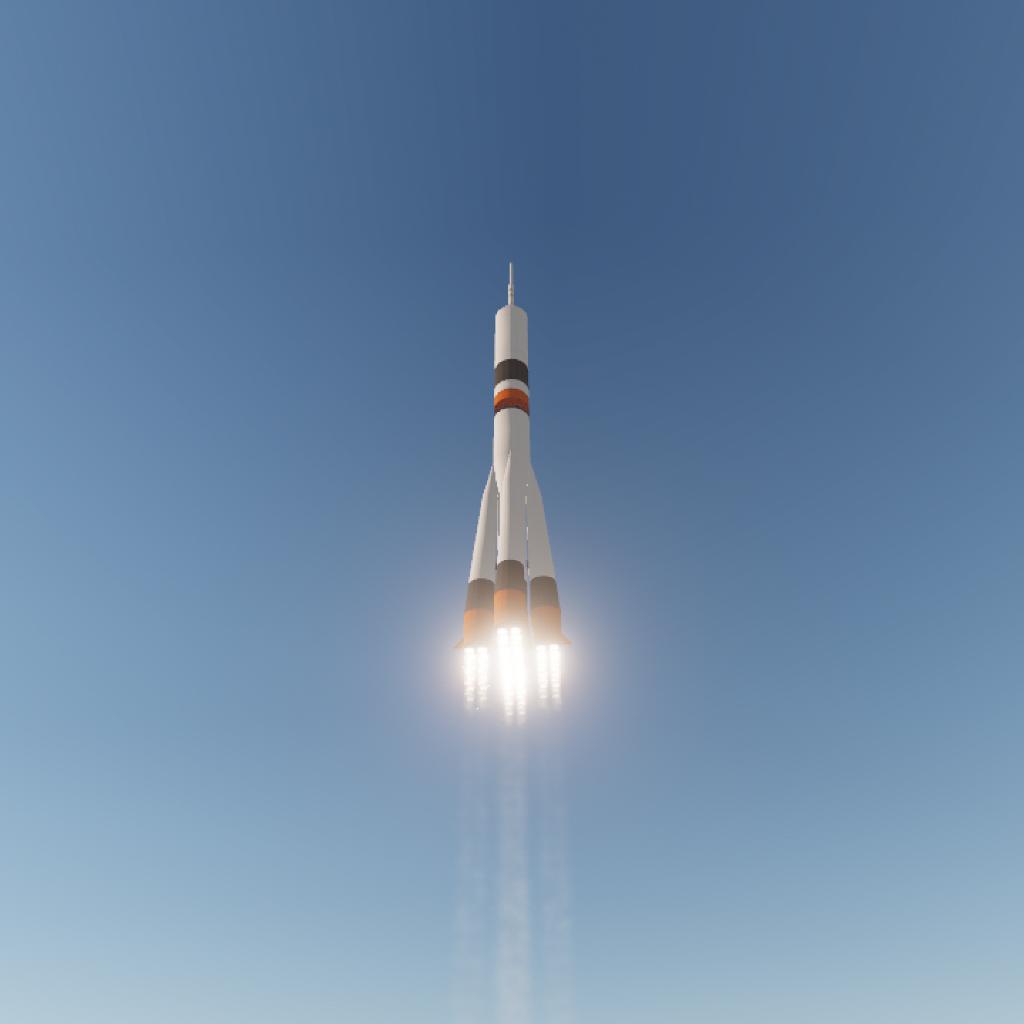The Soyuz-FG launch vehicle was an improved version of the Soyuz-U from the R-7 family of rockets, designed and constructed by RKTs Progress in Samara, Russia. The rocket's guidance, navigation, and control system was developed and manufactured by the Polisvit Special Design Bureau in Kharkiv, Ukraine.
Soyuz-FG made its maiden flight on 20 May 2001, carrying a Progress cargo spacecraft to the International Space Station (ISS). It was retired after the 25 September 2019 launch of Soyuz MS-15 to the ISS; the analog control system significantly limited its capabilities and prompted its replacement by the Soyuz 2. From 30 October 2002 to 25 September 2019, the Soyuz-FG was the only vehicle used by the Russian Federal Space Agency to launch Soyuz TMA, Soyuz TMA-M and Soyuz MS crewed spacecraft to the ISS.
For uncrewed flights, Soyuz-FG optionally flew with a Fregat upper stage, developed and produced by Lavochkin Association in Khimki. The maiden flight of this configuration occurred on 2 June 2003, the first of ten such launches. Launches of the Soyuz-FG/Fregat configuration were marketed by a European-Russian company called Starsem.
Soyuz-FG was launched from the Baikonur Cosmodrome in Kazakhstan, from Gagarin's Start (Site 1/5) for crewed missions, and from Site 31/6 for satellite launches with the Fregat upper stage.
The Soyuz-FG performed 64 successful launches until its first failure on 11 October 2018 with the Soyuz MS-10 mission. A video recording of the spaceflight released several weeks later suggested a faulty sensor, resulted in the destruction of the rocket. The crew, NASA astronaut Nick Hague and Russian cosmonaut Aleksey Ovchinin, escaped safely.
The FG designation stands for forsunochnaya golovka, Russian for injector head, the main component which received significant improvements. The previous RD-107 and RD-108 engines on the first and second stages, respectively, used 260 two-component centrifugal injectors. The improved RD-107A and RD-108A engines each had more than a thousand one-component injectors. These new injectors allowed finer aeration of propellant for more thorough burning and reduced the probability of high-frequency vibrations inside the combustion chambers. The result was increase in specific impulse by about 5 seconds (0.049 km/s), or about five percent, which allowed the rocket to lift another 250 to 300 kilograms (550 to 660 lb) of payload to orbit.
The Soyuz-FG was an interim upgrade designed to bridge the gap between the venerable Soyuz-U, in use since the 1970s, and the heavily modernized Soyuz-2, which was still under development when the FG was introduced. Although Progress initially planned to use the RD-107A and RD-108A engines on the Soyuz-2, the availability of flight-ready engines led to the decision to introduce the Soyuz-FG. This strategy allowed the Soyuz-U to remain in service, utilizing the existing stock of older engines, while the Soyuz-FG served as a transitional solution until the Soyuz-2 became fully operational.
Launch history
See also
- Soyuz (spacecraft)
- Soyuz programme
- Russian Federal Space Agency
- Starsem
Notes
References
- McDowell, Jonathan. "Launch Log". Jonathan's Space Page. Retrieved 28 March 2013.
- McDowell, Jonathan. "Satellite Catalog". Jonathan's Space Page. Retrieved 28 March 2013.
External links
- Russian Federal Space Agency about Soyuz-FG (in Russian)
- LV's manufacturer TsSKB-Progress about Soyuz-FG




